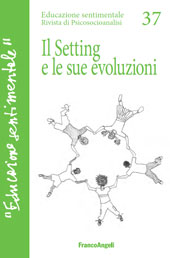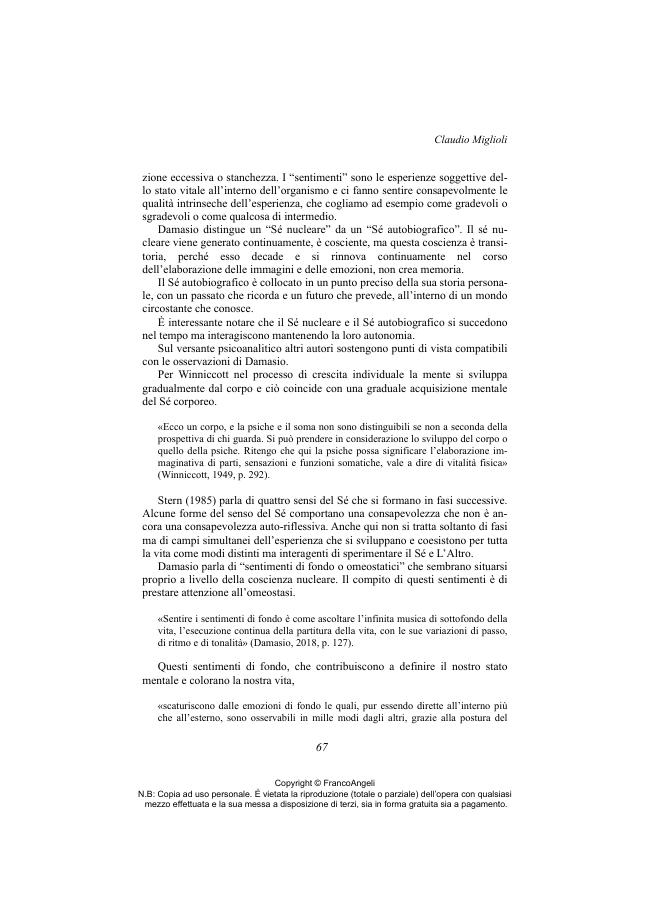Il setting incarnato : l'apporto delle neuroscienze alla comprensione della relazione terapeutica
P. 43-57
Winnicott osserva che non si può localizzare la mente nel cervello. Si può allora supporre che sia tutto il corpo a pensare? Le neuroscienze ci aiutano a compren-dere come questo avvenga attraverso uno studio non riduttivo del cervello. In questo articolo si pone particolare attenzione a quelle modalità inconsce, radica-te nello psiche-soma, che rendono significativa la comunicazione tra paziente e terapeuta (identificazione proiettiva, sintonizzazione, enactment). Il setting viene inteso come una sorta di "omeostasi" che assicura il permanere e lo svilupparsi della relazione, tenendo anche conto del contesto esterno.
Il Covid, ad esempio, mutando le consuete regole formali del setting, ha messo in evidenza come la fun-zione prioritaria del terapeuta sia quella di mantenere sempre il filo della rela-zione, assicurandone la sopravvivenza e la vitalità. Il setting viene anche inteso come l'ambiente di holding che include la personalità del terapeuta. Una parte significativa è dedicata all'enactment, inteso come un modo in cui le emozioni dissociate chiedono udienza, potendo essere elaborate solo con il profondo coin-volgimento emotivo di entrambi i componenti della coppia terapeutica.[Testo dell'editore]
The embodied setting: the contribution of neuroscience to the understanding of the therapeutic relationship. Winnicott notes that it is not possible to locate the mind in the brain. Can it then be assumed that the whole body is able to think? Neuro-science helps us to understand how this happens through a non-reductive study of the brain. In this article, particular attention is paid to those unconscious modali-ties, routed in the psyche-soma, which make the communication between patient and therapist meaningful ( projective identification, attunement, enactment). The setting is understood as a sort of "homeostasis" that ensures the continuation and development of the relationship, also taking into account the external con-text.
Covid, for example, by changing the usual rules of the setting, has highlight-ed how the therapist's priority function is to always keep the thread of the rela-tionship, unsuring its survival and vitality. The setting is also understood as the holding environment that includes the therapist's personality. A significant part is dedicated to enactment, understood as a way in which the dissociated emotions ask for an audience, being able to be elaborated only with the deep emotional involvement of both members of the therapeutic couple. [Publisher's text]
Forma parte de
Educazione sentimentale : 37, 1, 2022-
Artículos del mismo número (disponibles individualmente)
-
Información
Código DOI: 10.3280/EDS2022-037005
ISSN: 2037-7649
MATERIAS
KEYWORDS
- Continuità di essere, omeostasi, stati dissociati del Sé, intersogget-tività, sintonizzazione, affetti vitali, enactment, setting interno del terapeuta
- To go on being, homeostasis, dissociated states of the Self, intersubjec-tivity, attunement, vital feelings, enactment, internal setting of the therapist



